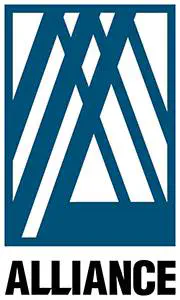Alliance Unveils Roadrunner Linux-Based Workstation Supercluster
The Grid’s Virtual Machine Room Narrows Gap Between Desktop Systems and Supercomputers

ALBUQUERQUE, NM–The National Computational Science Alliance will introduce its first 128 processor workstation supercluster running the Linux operating system as the latest addition to the National Technology Grid, its arsenal of powerful computational resources. The supercluster, called Roadrunner, will be unveiled at an April 8 dedication of the Supercluster Computing Facility of the Albuquerque High Performance Computing Center (AHPCC), located on the University of New Mexico (UNM) campus.
“Scalable clusters represent the most rapidly growing architecture of high-end computing,” said Larry Smarr, director of the Alliance and the National Center for Supercomputing Applications (NCSA), located at the University of Illinois at Urbana-Champaign. “By filling the gap between desktop workstations and teraflop-scale supercomputing systems, clusters provide a very cost-effective source of computing power close to the user.”
The emerging National Technology Grid connects a broad range of parallel computing systems, located at facilities from Boston to Maui, into a single virtual machine room. Based on the latest off-the-shelf technology, Roadrunner is the first large Linux-based workstation cluster to be added to the Grid. Roadrunner will provide the scientific community with a shared, cost-effective production environment for solving computational tasks too large for individual workstations. Roadrunner is designed to support traditional high-performance computing applications and emerging national information infrastructure applications, such as scalable Web serving, interactive visualization and data exploration, information serving, and data mining.
“Superclusters and supercomputers have made UNM a national leader in this strategic area,” said William Gordon, president of UNM. “We now have two supernodes on the National Technology Grid – the Roadrunner cluster at AHPCC and our nationally recognized supercomputing resources at the Maui High Performance Computing Center (MHPCC). UNM stands committed to continued collaborations with the Alliance, Sandia National Laboratory, Los Alamos National Laboratory, and the Department of Defense to deliver production-level, scalable computing resources to the scientific community.”
Roadrunner is a 64-node AltaCluster by Alta Technology Corporation containing 128 Intel® 450 MHz Pentium® II processors. The supercluster runs the Linux operating system and the processors are interconnected via a Myrinet network for high-speed communications. The supercluster will also be used for computer science projects that compare software performance with other Alliance machines, such as the Windows NT Supercluster and the Silicon Graphics® Origin2000TM array at NCSA and the IBM RS/6000 SP at MHPCC. UNM, the Alliance, Alta Technology and Intel are working together and with others in the industry to further evolve Linux-based cluster technology. Plans are to grow the Roadrunner Supercluster to 512 processors over the next 12 months, subject to the availability of necessary resources.
Anand Chanrasekher, general manager of the Workstation Products Group at Intel, stated: “We are excited to see Intel Architecture based workstation technology as the foundation for the Alliance’s National Linux Supercluster being deployed at UNM. Intel is focused on driving the performance available with Intel-based workstations, which is resulting in rapid adoption of our systems in commercial markets and increasingly, for the highest-end technical and research applications.”
“We’re pleased to see an AltaCluster being placed into production for general scientific computing,” said Glen Lowry, president and CEO of Alta Technology Corporation. “Linux-based AltaClusters have been used in many scientific and research environments in the past – this production cluster represents a great continuation of UNM’s computation offering.”
The National Computational Science Alliance is a partnership to prototype an advanced computational infrastructure for the 21st century and includes more than 50 academic, government and industry research partners from across the United States. The Alliance is one of two partnerships funded by the National Science Foundation’s Partnerships for Advanced Computational Infrastructure (PACI) program and receives cost-sharing at partner institutions. NSF also supports the National Partnership for Advanced Computational Infrastructure (NPACI), led by the San Diego Supercomputer Center.
The National Center for Supercomputing Applications is the leading-edge site for the National Computational Science Alliance. NCSA is a leader in the development and deployment of cutting-edge high-performance computing, networking and information technologies. The National Science Foundation, the state of Illinois, the University of Illinois, industrial partners, and other federal agencies fund NCSA.
http://access.ncsa.uiuc.edu/Headlines/990405.Roadrunner.html